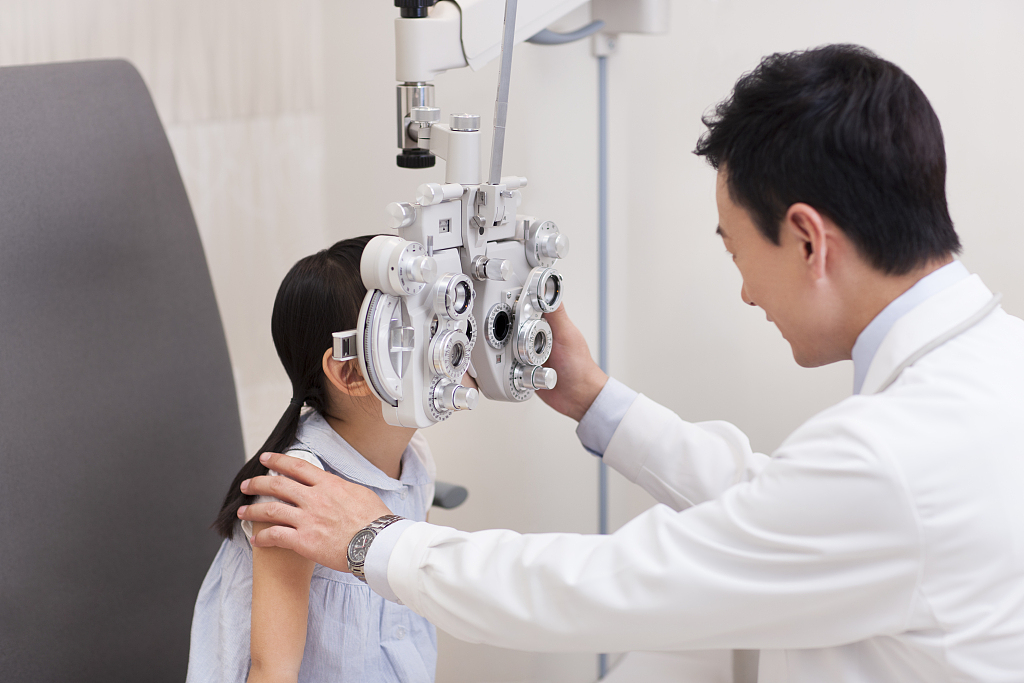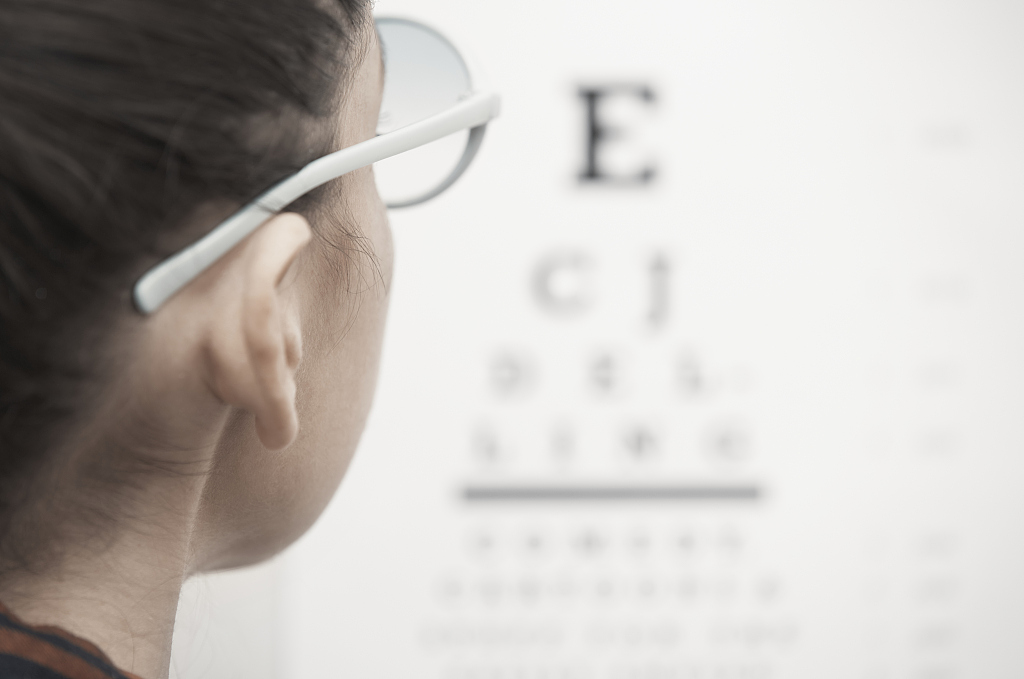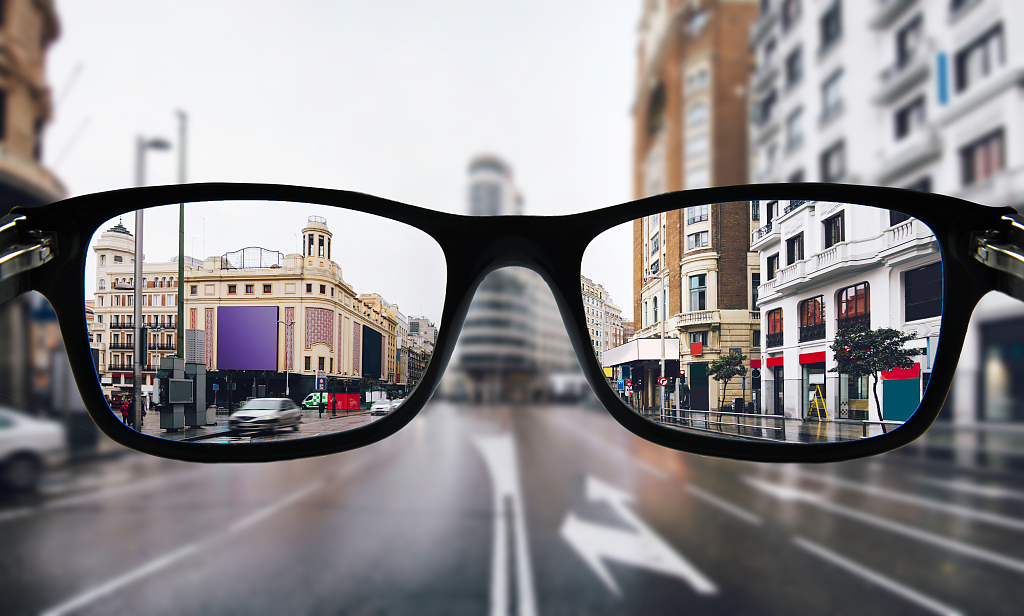June 6, 2020, marks the 25th National Eye Care Day in China, which was originally set to raise awareness of protecting our vision and preventing eye diseases. According to a report released by China's National Health Commission on June 5, the myopia rate of high school students in China has reached more than 80 percent. Why are more and more people suffering from myopia? How can myopia be prevented? What myths should be avoided regarding myopia?

High prevalence of myopia among teenagers
According to the "China Eye Health White Paper" released by China's National Health Commission on June 5, 2018, the overall myopia rate of children and adolescents in China was 53.6 percent. Among them, 6-year-old children account for 14.5 percent, elementary school students account for 36 percent , junior high school students account for 71.6 percent, and high school students account for 81 percent.
Statistics from the World Health Organization (WHO) confirm the bad situation. In October 2019, the WHO released the first "World Report on Vision". The report indicates that at least 2.2 billion people in the world have vision impairment or blindness, of which over a billion cases could have been prevented or have yet to be addressed.
In China, the number of people with impaired eyesight is also very alarming. The report cited several epidemiological surveys that conducted in some parts of China, the prevalence rate of dry eyes in adults over 40 years old is about 30 percent, the prevalence rate of pterygium in rural areas reaches 33 percent, and the rate of myopia in urban youth is as high as 67 percent.

Excessive use of electronic products is one of the culprits leading to myopia
"World Report on Vision" states that population growth, ageing, lifestyle changes, and limited access to eye care services are the main factors for the increasing number of visually impaired people, especially in low- and middle-income countries.
In China, factors such as stress in study and work, lack of outdoor activities, excessive use of electronic products, and low awareness of prevention and control are considered by ophthalmologists as the main factors leading to a high incidence of myopia.
A report released by China Internet Network Information Center (CNNIC) in May showed that there are 175 million underage netizens in China. Another report published by China National Children's Center (CNCC) in August 2019 mentioned that children use electronic products for an average of 43.24 minutes per day on school days, and longer on weekends, with an average of 96.27 minutes.
Wang Ningli, head of a national technical guidance group for blindness prevention, emphasized at the press conference held by the National Health and Health Commission on June 5 that people spend more time looking at electronic products than paper equivalents, primarily because the content design in electronic devices is far more attractive than paper. Besides, the electromagnetic radiation that results from electronic devices could also damage the eyes.

Four popular myopia myths you should stop believing in
Myth 1: Kids do not need to check their eyesight often
The development of visual-acuity is mature at 5-to-6-years-old. The visual-acuity of children at different ages is different. Experts recommend that preschool children get their vision checked once every six months. Once problems are found, they should be treated in time.
Myth 2: Wearing glasses weakens your eyesight
There's no suggestion that wearing the correct glasses will make eyesight worse than not wearing them at all. On the contrary, for teenagers, correct glasses can help them control myopia.
Myth 3: Myopia can be cured by surgery
Myopia surgery is the same as wearing glasses. It corrects refractive errors. The eyes are still myopic, which is the equivalent to wearing a concave lens. Although you can see clearly, if you don't pay attention to protect your eyes, myopia will happen again.
Myth 4: Unproven remedies can cure myopia
Some may claim that there are unproven remedies or high-tech devices that can cure myopia in a month or even 10 days, but this is not true. Currently, myopia can be corrected, but there is no method or technique to completely cure myopia.

Four tips for maintaining good eyesight
Tip 1: When using electronic products, do not use them for too long. Use them for 20 minutes at most, and then relax your eyes.
Tip 2: Don't look at the electronic screen in a dark room, this will increase eye fatigue and may also cause glaucoma. If you are used to using your mobile phone before sleeping, don't forget to turn on the lamp or set a night time mode on your device.
Tip 3: When you are attentive, the frequency of involuntary blinking will decrease. This exposes the cornea to dry air. Therefore, you must take the initiative to blink when reading and working.
Tip 4: Look far enough to rest your eyes. After using your eyes for a while, be sure to force yourself to go to the window and look at objects at least five meters away for 10 minutes.
"The eyes are the windows to the soul", so don't let myopia harm them.